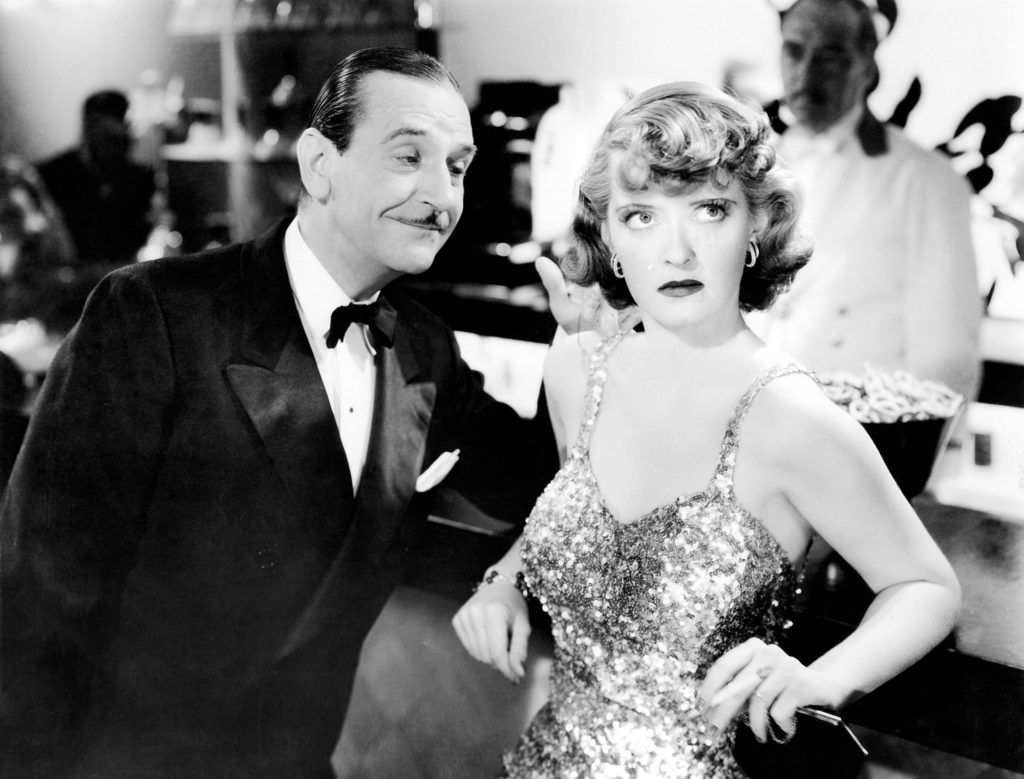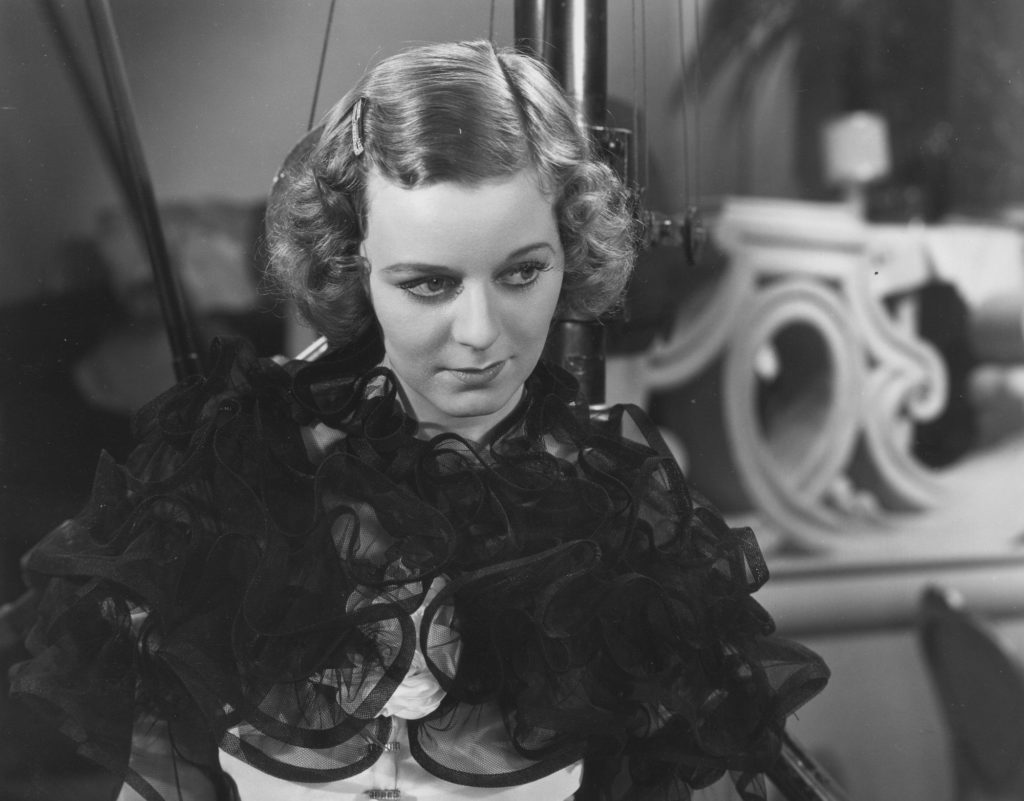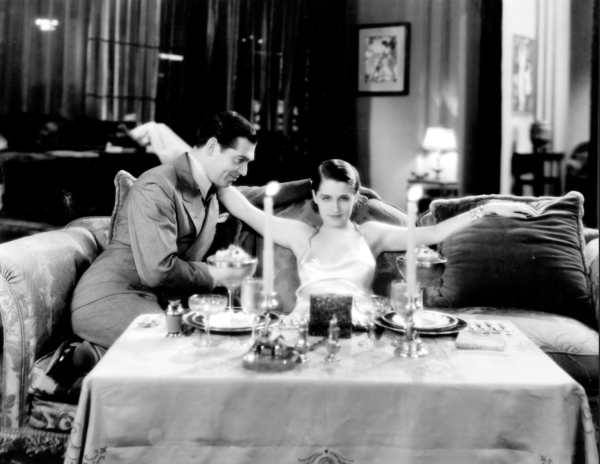Kicking off yesterday, April 8th, the Museum of Modern Art’s “What Price Hollywood” film series pairs with a brand-new poster exhibition to show the evolution of sexuality and gender in Hollywood movies. It’s a broad subject, to be sure, but with 50-decade range of films and collection of sexually empowered stars—Louise Brooks, Barbara Stanwyck, Bette Davis, Gloria Grahame, Divine, and more are represented on the screening series side of things—“What Price Hollywood” serves as an invigorating primer on an always-relevant subject.
“The film series grew out of the poster exhibition, and the poster exhibition grew out of access we had to this remarkable collection of film posters by a collector named Ira M. Resnick,” curator Ron Magliozzi explains. “He loved movie stars, and he collected a lot of exceptionally beautiful posters. We decided, because there was such a strong female presence in the work that he collected, to organize the show differently and to program it in a kind of edgy way. To make it about gender, basically. With the culture of #MeToo, we felt inspired to look at the posters that way.”

Explains curatorial assistant Brittany Shaw, the posters were chosen and arranged in such a way as to accentuate “accentuate the certain poses and positioning that were used to sell this very heteronormative classic Hollywood imagery.” The product being sold by the posters may have been firmly heterosexual, at least as far as the Hollywood establishment was concerned, but not everyone looking at the posters was a straight, cis, man—a fact that serves as a heavy undercurrent of the poster exhibit and companion screening series.
“We made a point of bringing together posters where you can see a queer sensibility at hand,” Magliozzi notes. “It might’ve been the queer sensibility of the person who designed the poster. But it’s definitely in the poster. We’ve organized the posters in a way where you can’t help but notice that motif in them. And then there’s commentary on the wall about that. Having curated Hollywood stuff for a long time, you’re always looking for fresh ways to make people experience it. Personally, I’ve been at it a long time. Nostalgia and escapism are not enough for me anymore.”
The queer sensibility of this poster series, notes Shaw, finds a particularly interesting outlet in James Dean, who was “obviously was a queer man himself, but also [had a space] in the lesbian community. There’s this beautiful essay which is quoted on the wall of our exhibition by an author called Marie Cartier. She explores this idea of James Dean as this new American man that emerged after the Second World War. And the new American man was allowed to express himself and be emotional and cry. She proposes: What if butch lesbians weren’t modeled after James Dean? What if James Dean modeled himself after butch lesbians? And the entire generation of new men was modeled after this lesbian archetype.”
The “What Price Hollywood” poster exhibit, running through June 15, contains 140 posters arranged throughout MoMA’s pair of screening galleries.The screening series winnows that number down to 13, ranging from 1929’s Diary of a Lost Girl to 1973’s Ganja & Hess, the only independent film represented in the series.
The inclusion of Ganja & Hess, Bill Gunn’s slow-burn vampire classic, has to do with the lack of diversity in Hollywood films—and, by extension, Hollywood posters—during the 20th century. “We made a particular point of installing Josephine Baker strategically in the show with a poster you see when you enter the space,” says Magliozzi. “We’ve already had comments on that, on the lack of black performers in the posters. I’ve had to explain to people, they didn’t have the [starring] roles. That’s why Ganja & Hess is here. It’s about gender and uses the vampire genre to [explore] that, so that’s why it’s appropriate. The poster happens to be Bill Gunn’s own personal poster, which is a little moving.”
Aside from vampires, “What Price Hollywood” gives us female monarchs (1934’s The Scarlet Empress, starring Marlene Dietrich), sex workers (Bette Davis—implied only—in Marked Woman, and Divine in John Waters’ Female Trouble), killers (Peggy Cummins in Gun Crazy, giving us one of the best character introductions in all of cinema history) and the just plain sexually liberated.
Into that final category falls 1931’s rarely screened A Free Soul, starring Norma Shearer, massive MGM star and wife of wunderkind producer Irving Thalberg. Shearer, at this time, had power—and what she chose to do with it, in this and in other Pre-Code films, was to play women who behave in supposedly “immoral” ways (i.e., having sex outside of marrriage and not being the most attentive parents) while neither being punished in-story or losing audience sympathy. A Free Soul—co-starring Clark Gable, Lionel Barrymore, and Leslie Howard—is the shining jewel in this portion of Shearer’s career.
“She doesn’t pull any punches about the kind of life she’s leading.” Magliozzi’s quote is in reference to Shearer’s character in A Free Soul, but it also applies to Bette Davis’ character in Marked Woman, which feels like a Pre-Code film despite having been made in 1937. A particular favorite of Shaw’s, the film stars Davis as a nightclub hostess whose job is to make nice with men (and, it’s implied, sometimes engage in sex work) so they’ll spend money at the club where she works. The club is taken over a violent mob boss, which leads to an escalation requiring Davis and her fellow hostesses to stand up against powerful men who could easily have them killed. It’s the sort of hard-nosed film Davis particularly excelled in, and its final shot serves as a tribute to sisterhood and solidarity.

On the lighter side of things is 1935’s The Good Fairy, directed by William Wyler and adapted for the screen by Preston Sturges. Margaret Sullavan’s character, quite the opposite of the leads in Marked Woman and A Free Soul, is a naive orphan who, let out into the world for the first time, just wants to do good for other people. Her innocent nature gets her in some tough spots when men enter the picture. “The Good Fairy is all about male lechery and romance and paternalism in this fairy-tale context in which the woman is not in control of her destiny,” says Magliozzi. “It has Pre-Code elements to it, actually. It’s a little bit edgy,” while still maintaining the lightness of spirit that suffuses much of Preston Sturges’ work.
Other films screening as part of What Price Hollywood include Clash by Night (1952, dir. Fritz Lang, with Barbara Stanwyck), Sylvia Scarlett (1935, dir. George Cukor, with Katharine Hepburn), In a Lonely Place (1950, dir. Nicholas Ray, with Gloria Grahame), Midnight (1936, dir. Mitchell Leisen, with Claudette Colbert), and 1932’s What Price Hollywood (dir. George Cukor), the film industry’s first telling of the A Star is Born story. The screening series runs through April 20.



Share this post